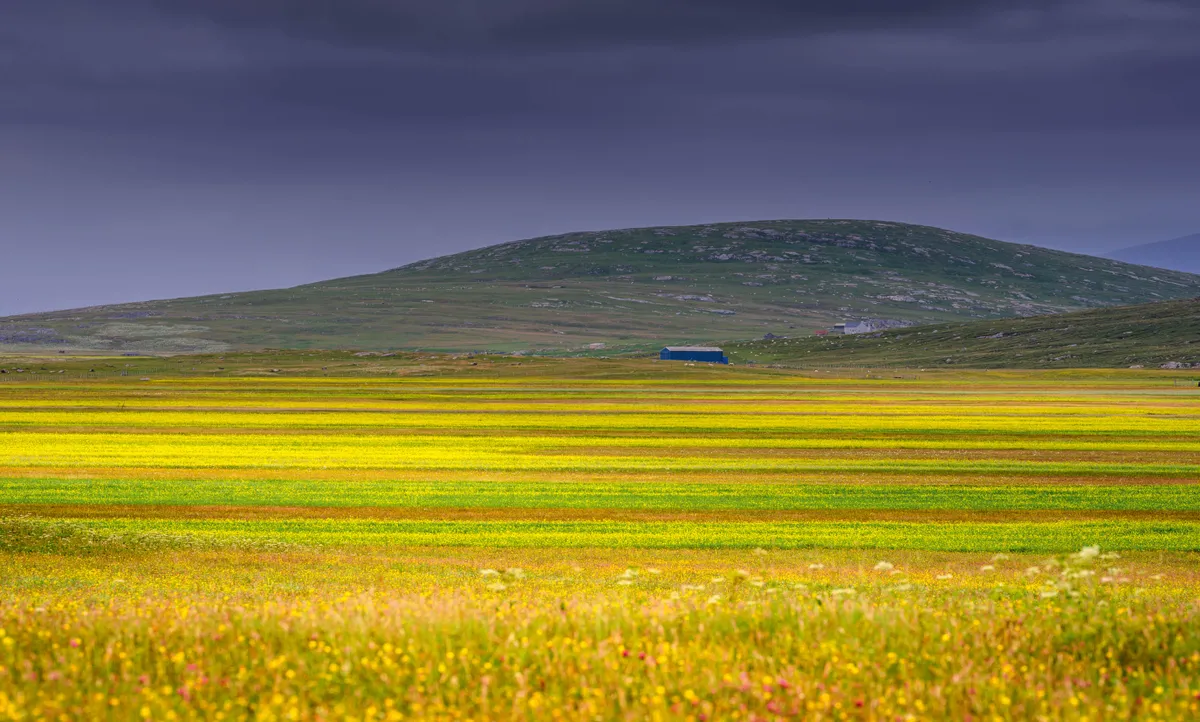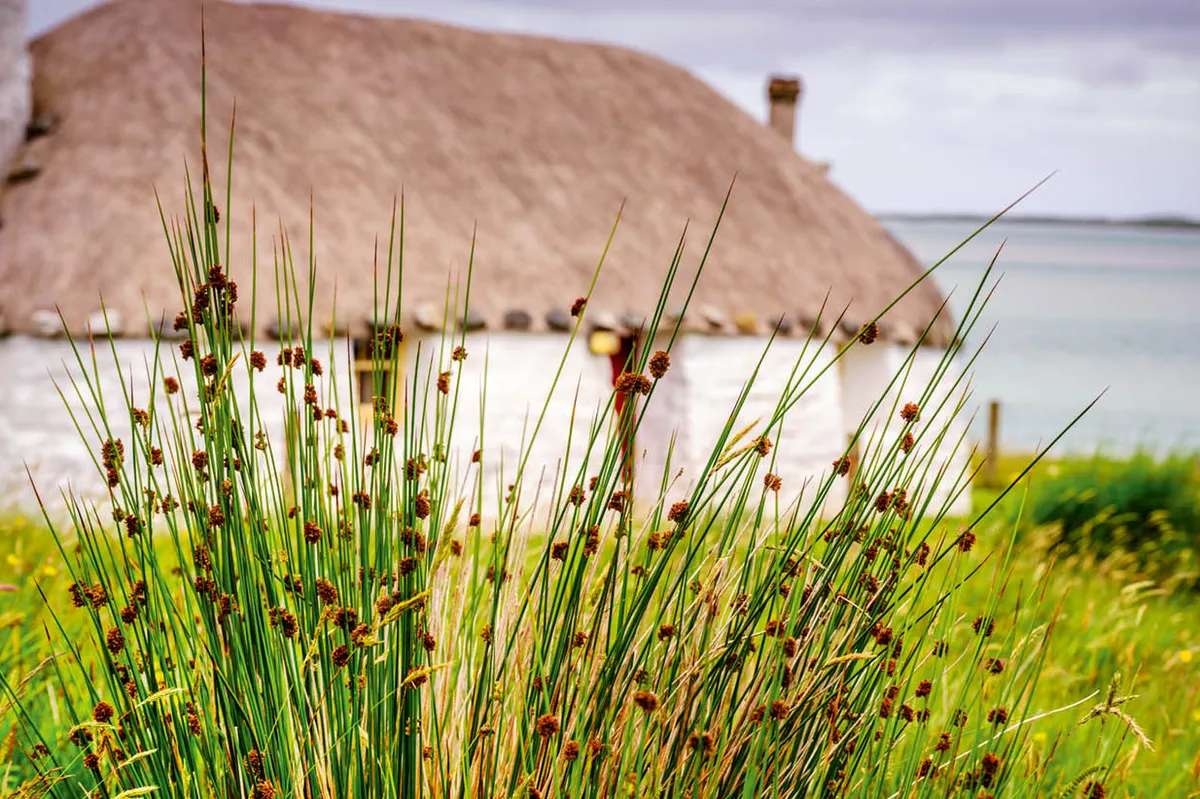John A. Love is passionate about the lives of the crofters who work on the grassy plains of Scotland’s magical machair.
What is machair and how is it managed?
I came to Uist late in 1992 to work as area officer for what was then Scottish Natural Heritage, and I have lived beside machair ever since. Edward Dwelly’s classic Gaelic-English Dictionary (1911) describes it perfectly – ‘an extensive, low-lying fertile plain’ and ‘a long range of sandy plains fringing the Atlantic side of the Outer Hebrides. They are closely covered with short green grass, thickly studded with herbs of fragrant odours and plants of lovely hues’.

Machair is not just confined to the Outer Hebrides, with other fine examples on the inner islands, parts of the nearby mainland and Orkney, Shetland and the west of Ireland. Many areas might be damper, with some marshes, ditches and small lochans scattered throughout, sand dune systems along the shore, perhaps even the sandy beaches too. But what makes Uist machair special is the human contribution – crofting.
Rotational cultivation of ‘corn’ (a mixture of small oats, rye and the old bere barley) adds to the mix – both by cropping and as fallow, even small potato patches. Machair is not so much a single habitat, but a mosaic of habitats. The sand blown inland from beaches and dunes is composed of crushed seashells and therefore rich in calcium. But the lime-rich sandy soils drain readily, lacking much humus, and are deficient in certain trace elements that modern cereals demand.
Machair is not so much a single habitat, but a mosaic of habitats
So, to produce good crops, seaweed cast upon the shore in winter storms is applied before ploughing and sowing. The traditional corn mix grows short and stiff to withstand the winds and salt spray, so was harvested by hand or binders. Being grown largely as animal fodder, largely for cattle, what modern farmers might consider ‘weeds’ can be tolerated. Hence the flowerrich sward, making the ideal conditions for a whole host of insects and nesting birds.

This ancient land use was low intensity and effectively organic. When I arrived this remarkable system was being encouraged (with payments for the application of seaweed, altered mowing techniques and late cutting to encourage the disappearing corncrake). Some maintained that without this crofting would not have survived much longer. Uptake was high. But times are changing. Agricultural support seems to be nudging machair crofters into becoming farmers.
The machair presents an astonishing spectacle, providing us with an amazingly rich and diverse ecosystem
The demand for beef and for cattle is declining, thus also their manuring effect that adds flower seeds and organic matter to the machair in winter. Modern machines plough deeper, compacting the soil and restricting drainage; mineral fertilisers are replacing seaweed, sprays are sometimes applied to clean out the weeds. Black plastic bags wrap the silage, cut earlier to the detriment of our corncrakes, corn buntings, skylarks, etc.

In nearly 30 years of living beside the machair, I have seen its conservation resource diminish. And now there is the threat of climate change, increasing the frequency of storms and sea level rise, both promoting coastal erosion. The machair has been retreating for centuries yet still presents an astonishing spectacle, providing us with an amazingly rich and diverse ecosystem. It has helped sustain a successful, sympathetic and thriving rural population. But, we have to ask ourselves, where will it be in the future?
Read more about meadow planting here.
This is an edited extract from Meadow: The Intimate Bond Between People, Place and Plants by Iain Parkinson with photographs by Jim Holden. Through 30 first-person accounts, the book explores the intimate and complex relationship between people, place and plants which, over the centuries, has shaped the character of the British Isles. It’s published by Royal Botanic Gardens, Kew, priced £25. ISBN 978-1842467473.